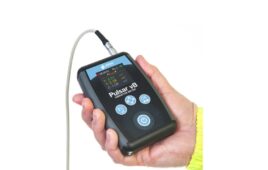To meet the current demand for ventilators, many universities have risen to the challenge to create easily-constructed, low-cost ventilators from readily available parts. While the traditional ventilator with all the bells and whistles could cost from $30,00 to $40, 000 or more, university teams have been able to demonstrate working prototypes – often with less than $300 in off-the shelf parts. For many of these designs, a manually operated air mask bag unit (AMBU) bag, readily available in large quantities at hospitals, provided the starting point.
Responding to the coronavirus outbreak, researchers at the Massachusetts Institute of Technology (MIT) formed MIT E-Vent (for emergency ventilator) on March 12. Using an AMBU bag and building on a 2010 project, the new team is developing an open source, reference hardware ventilator design for others to manufacture. Recognizing that it cannot replace an FDA-approved intensive care unit (ICU) ventilator, the developed device is intended to help free up existing supply or be used in life-or-death situations when there is no other option.
 Mechanical paddles on an AMBU bag driven by a small motor provide air supplied through a tube placed in the patient’s airway. Courtesy of MIT E-Vent researchers.
Mechanical paddles on an AMBU bag driven by a small motor provide air supplied through a tube placed in the patient’s airway. Courtesy of MIT E-Vent researchers.
As noted by the early work at MIT, the need for lower cost ventilators has been observed and addressed long before the current COVID-19 outbreak. In 2016, the Innovative Global Solutions Enterprise team at Michigan Technological University (MTU) developed a minimal ventilator that could be produced quickly and then stockpiled or sent to developing countries that could not afford the typical ventilator or even use one if they had it.
Dr. Robert Warrington, a co-advisor on the project, now retired, worked with a small clinic in Sunyani, Ghana that had one donated ventilator that was very expensive and had never been used. He said, “They couldn’t operate it and certainly would not be able to maintain it.” The project’s goal was to address those problems. They developed an AMBU bag-based basic ventilator with full documentation, including a simple user’s manual and a parts list that will cost under $1,000 or so, including labor. There is interest in using the results to address the current COVID-19 problem.
Today, MTU engineers are also part of the open-source ventilator movement from HardwareX, intent on building an open-source, 3D-printed ventilator and other COVID-19 medical hardware. To do this, they need ideas, printers, medical experts and a synthetic lung.
More approaches to come…
Filed Under: Sensor Tips, Fighting COVID-19




